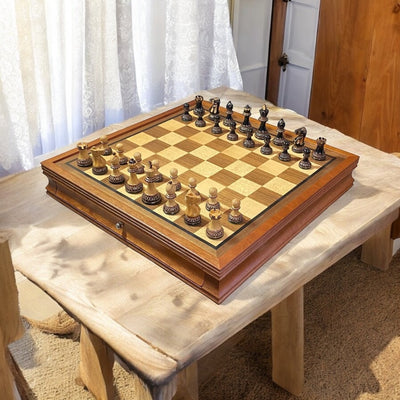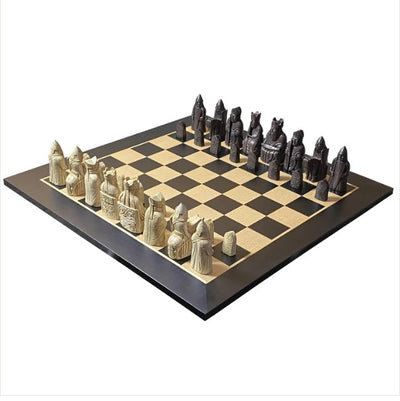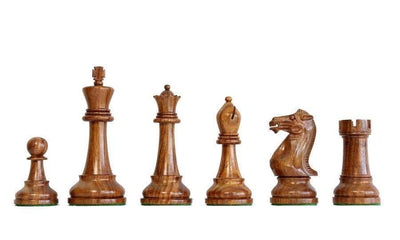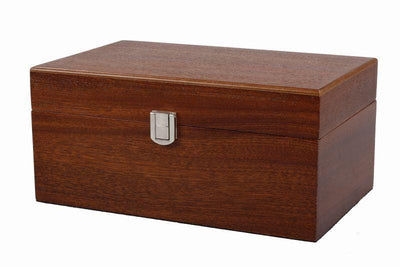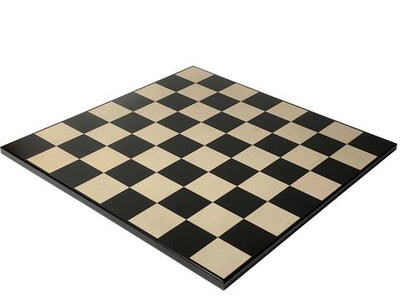Buying a Staunton Chess Set
Regardless of the fact that you may not be an eager chess player, you are unquestionably acquainted with the Staunton style of chess pieces. They are the very picture that goes to the brains of a great many people of what a chess piece looks like and they have ended up synonymous with amusement. They are the standard by which all chessmen are composed and they are the outline stipulated in the tenets of chess for competition play, formally assigned as being what is indicated by the World Chess Federation in 1924.
What makes this specific outline the excellent case of staunton chess set the world over and where did the configuration start?
Here is a short history of the House of Staunton and it's relationship with the 'Illustrious Game.'
Why the Need for a Design Overhaul?
The round of chess has been around for a considerable length of time yet truly didn't get to be mainstream in the West until the eighteenth and nineteenth hundreds of years. Until that time there was no standard outline for chessmen. Players played with their own particular chessmen, made by the huge fashioners and makers of the day, for example, Lund, Merrifield, Calvert, Saint George, French Regence, and Selenus.
The primary issue with these chessmen was in their configuration; the sets were unrealistic, the chessmen themselves were excessively comparative in appearance, making it impossible to different pieces in the set, and they were costly to the producer. The pieces were now and then excessively feeble, here and there excessively resplendent for reasonable utilize, and now and then out and out confounding when seen on a chess board
This is the part in chess history where our focal figures join the diversion.
The players:
John Jaques of London - A diversion and game assembling organization situated in the Hatton Garden region of London claimed by John Jaques, brother by marriage of Nathaniel Cook.
Nathaniel Cook: Entrepreneur, daily paper editorial manager, and the recorder and authoritatively named originator of the 'Staunton style' chessmen.
Howard Staunton: Shakespearean researcher and informal World Chess Champion and power of the times.
There is no debate that there was a redesign of the outline of Chessmen, that it was authoritatively authorized to and enlisted by Nathanial Cook, and that it was embraced and named for Howard Staunton. There is, in any case, some theory that the configuration was initially brought about by John Jaques himself and that the driving force for this upgrade originated from rehashed protests from his clients over the impracticalities of existing plans.
Mr. Jaques, an ivory turner and specialist, begin discovering a more suitable all around configuration for chessmen. Numerous antiquarians trust that the first outline idea was Jaques', and that his brother by marriage Nathaniel contributed to the completed plan and was persuaded to enroll it in his own name and persuade Mr. Staunton to support it. Nathaniel Cook was connected with Howard Staunton through the periodical he altered, for which Mr. Staunton distributed articles on chess.
Whichever way it happened, the deciding result is the same: The Staunton outline chessmen are unrivaled in appearance, security, and execution to any current chessmen of the time and keep on being the standard-carrier right up 'til the present time.
The patent for a "Decorative Design for an arrangement of Chess-Men" was enrolled on 1 March, 1849 under the Ornamental Designs Act of 1842. Mr. Staunton by and by marked the first sets furthermore composed the first news-discharge. The 'Staunton Style' set was openly accessible on 29 September, 1849.
The Design Difference
Beside the insecurity and stature of existing chess sets, the similitudes in the presence of chessmen of a set, alongside the way that adversaries regularly played with their own specific set, that created a noteworthy issue. The failure of a player to recognize a King, Bishop, or Queen in an adversary's arrangement of chessmen could cost them the match.
There are a few key variables in the Staunton Design that have the effect:
Clearly characterized pieces. For instance, the King is quickly identifiable by his crown and the Queen by her coronet. The pieces are distinctive statures so they can be seen and recognized from each other by the contradicting players.
Excessive ornamentation was evacuated. The configuration is still rich in its straightforwardness, however with a superior hand-feel.
The chessmen were abbreviated generally, given a more extensive, more steady base, and weighted for significantly more noteworthy security. The pieces' bottoms were secured in felt to simple grinding.
It was an extraordinary change over anything in the presence and would have gone far even without the vigorous self-advancement of Howard Staunton. The relative effortlessness of the outline likewise made it less demanding to mass-deliver, and accordingly more reasonable.
What makes this specific outline the excellent case of staunton chess set the world over and where did the configuration start?
Here is a short history of the House of Staunton and it's relationship with the 'Illustrious Game.'
Why the Need for a Design Overhaul?
The round of chess has been around for a considerable length of time yet truly didn't get to be mainstream in the West until the eighteenth and nineteenth hundreds of years. Until that time there was no standard outline for chessmen. Players played with their own particular chessmen, made by the huge fashioners and makers of the day, for example, Lund, Merrifield, Calvert, Saint George, French Regence, and Selenus.
The primary issue with these chessmen was in their configuration; the sets were unrealistic, the chessmen themselves were excessively comparative in appearance, making it impossible to different pieces in the set, and they were costly to the producer. The pieces were now and then excessively feeble, here and there excessively resplendent for reasonable utilize, and now and then out and out confounding when seen on a chess board
This is the part in chess history where our focal figures join the diversion.
The players:
John Jaques of London - A diversion and game assembling organization situated in the Hatton Garden region of London claimed by John Jaques, brother by marriage of Nathaniel Cook.
Nathaniel Cook: Entrepreneur, daily paper editorial manager, and the recorder and authoritatively named originator of the 'Staunton style' chessmen.
Howard Staunton: Shakespearean researcher and informal World Chess Champion and power of the times.
There is no debate that there was a redesign of the outline of Chessmen, that it was authoritatively authorized to and enlisted by Nathanial Cook, and that it was embraced and named for Howard Staunton. There is, in any case, some theory that the configuration was initially brought about by John Jaques himself and that the driving force for this upgrade originated from rehashed protests from his clients over the impracticalities of existing plans.
Mr. Jaques, an ivory turner and specialist, begin discovering a more suitable all around configuration for chessmen. Numerous antiquarians trust that the first outline idea was Jaques', and that his brother by marriage Nathaniel contributed to the completed plan and was persuaded to enroll it in his own name and persuade Mr. Staunton to support it. Nathaniel Cook was connected with Howard Staunton through the periodical he altered, for which Mr. Staunton distributed articles on chess.
Whichever way it happened, the deciding result is the same: The Staunton outline chessmen are unrivaled in appearance, security, and execution to any current chessmen of the time and keep on being the standard-carrier right up 'til the present time.
The patent for a "Decorative Design for an arrangement of Chess-Men" was enrolled on 1 March, 1849 under the Ornamental Designs Act of 1842. Mr. Staunton by and by marked the first sets furthermore composed the first news-discharge. The 'Staunton Style' set was openly accessible on 29 September, 1849.
The Design Difference
Beside the insecurity and stature of existing chess sets, the similitudes in the presence of chessmen of a set, alongside the way that adversaries regularly played with their own specific set, that created a noteworthy issue. The failure of a player to recognize a King, Bishop, or Queen in an adversary's arrangement of chessmen could cost them the match.
There are a few key variables in the Staunton Design that have the effect:
Clearly characterized pieces. For instance, the King is quickly identifiable by his crown and the Queen by her coronet. The pieces are distinctive statures so they can be seen and recognized from each other by the contradicting players.
Excessive ornamentation was evacuated. The configuration is still rich in its straightforwardness, however with a superior hand-feel.
The chessmen were abbreviated generally, given a more extensive, more steady base, and weighted for significantly more noteworthy security. The pieces' bottoms were secured in felt to simple grinding.
It was an extraordinary change over anything in the presence and would have gone far even without the vigorous self-advancement of Howard Staunton. The relative effortlessness of the outline likewise made it less demanding to mass-deliver, and accordingly more reasonable.


